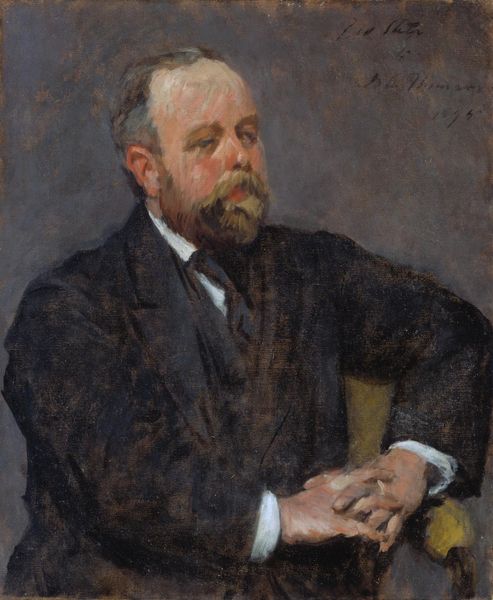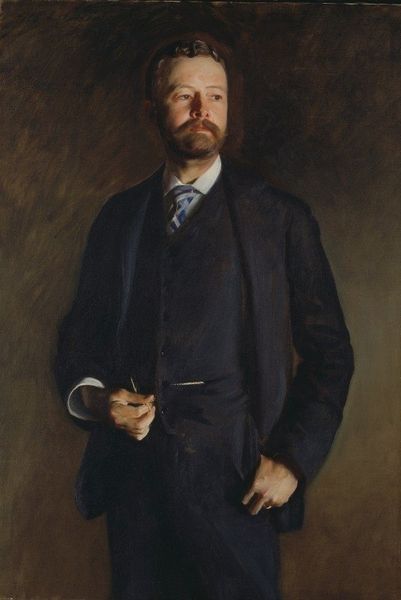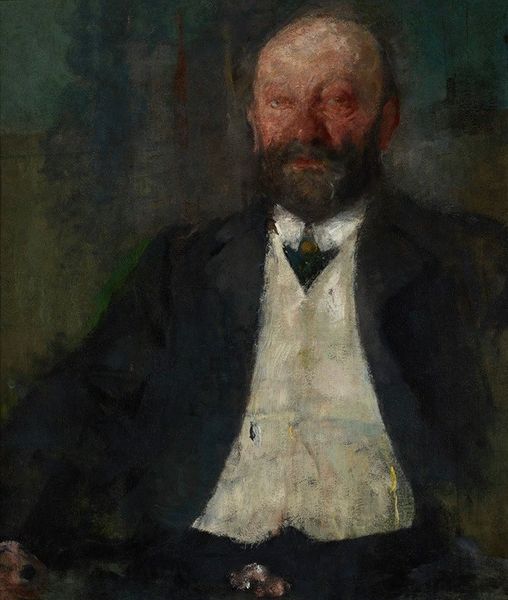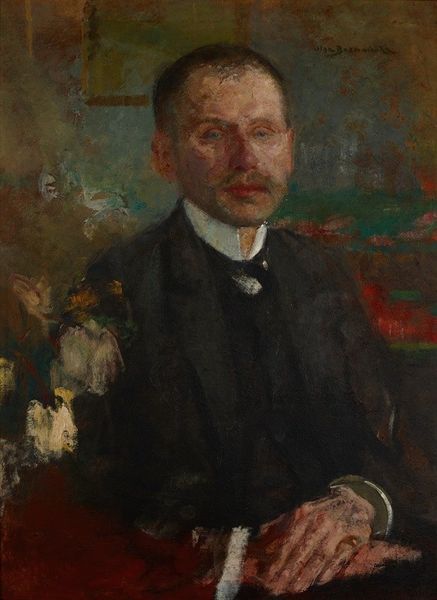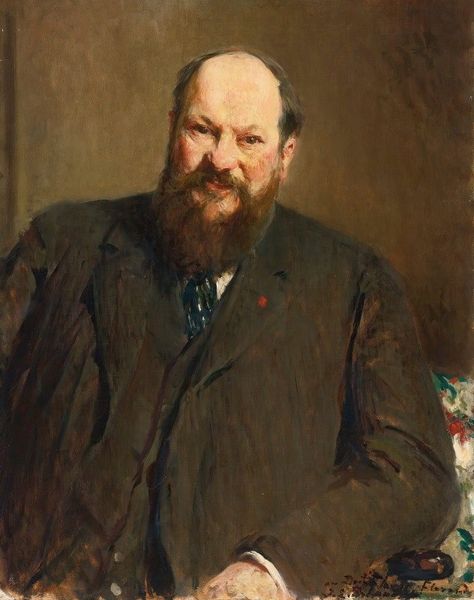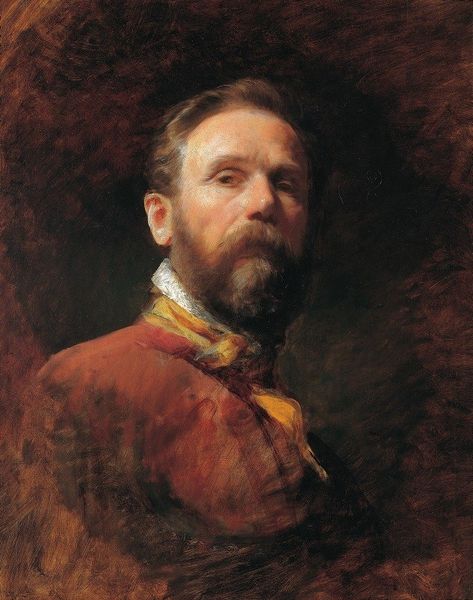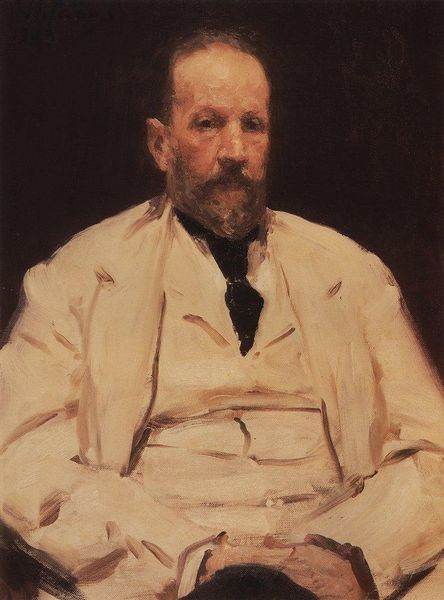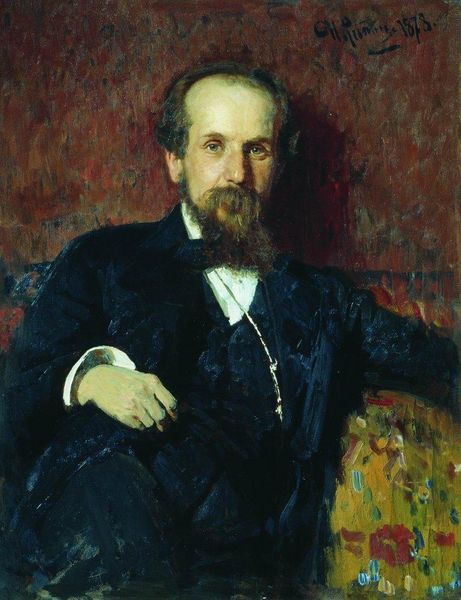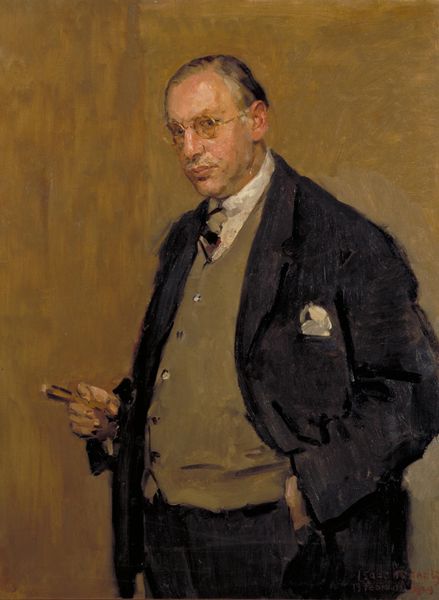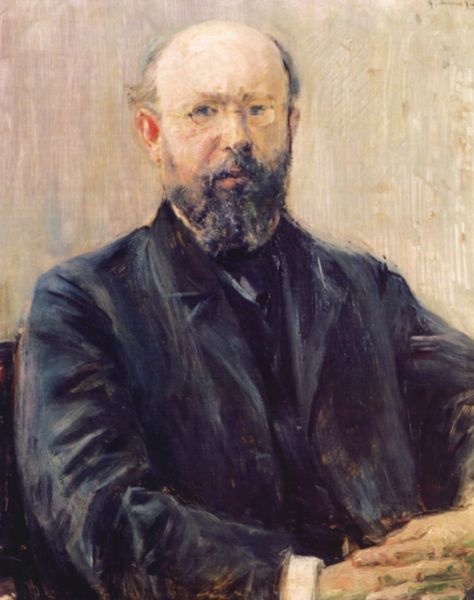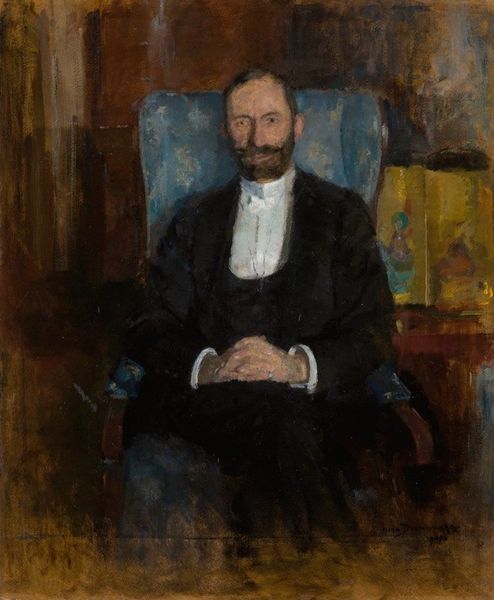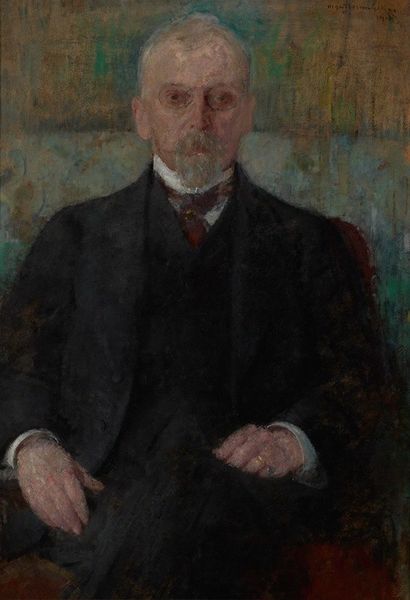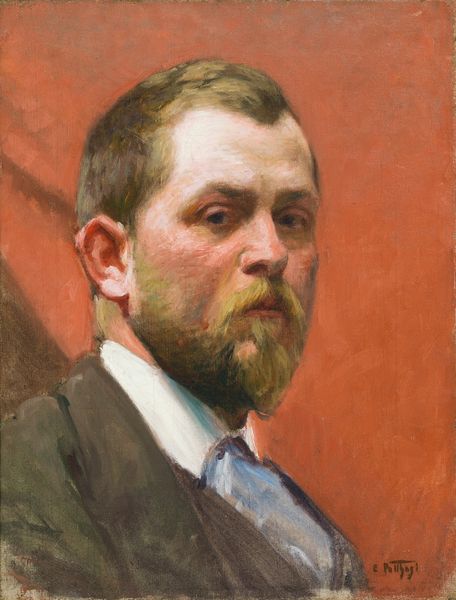
painting, oil-paint
#
portrait
#
painting
#
oil-paint
#
russian-avant-garde
#
history-painting
#
realism
Copyright: Public domain
Editor: This is Ilya Repin’s “Portrait of P.A. Stolypin,” painted in 1910 with oil on canvas. The intense red background paired with the serious look on Stolypin's face really sets a formal and somewhat ominous mood. What stands out to you most about this painting? Curator: Well, knowing Stolypin was assassinated just a year after this portrait was completed certainly deepens that ominous feeling you described. Considering its place in history, what interests me is how Repin, a master of Russian realism, chooses to portray such a controversial figure. Stolypin, as Prime Minister, enacted policies of land reform intended to stabilize the volatile political climate. But, his "Stolypin necktie," a reference to his suppression of dissent, haunts this image, doesn’t it? Editor: Absolutely. The newspaper he holds also seems significant, a direct reference to his involvement in shaping the political narrative, perhaps? Curator: Precisely. This newspaper subtly implies Stolypin's manipulation of the press and, consequently, public opinion. Repin, while painting a formal portrait for commission, embeds hints of the socio-political tensions and moral ambiguities surrounding his sitter. What kind of statement do you think Repin makes by including these details? Does it justify the assassination, or just acknowledges the conflicting perspective? Editor: That's complex. I see that the artist might be using his canvas as a mirror, reflecting the multifaceted and contradictory views surrounding Stolypin and his policies, making it hard to pinpoint one intended viewpoint. Thank you. It changed the way I will perceive art. Curator: My pleasure. Recognizing art as a product of its socio-political milieu—shaped by both patronage and the artist's individual interpretations of current affairs—that’s the exciting part of art history for me.
Comments
No comments
Be the first to comment and join the conversation on the ultimate creative platform.
